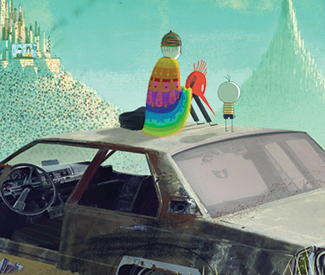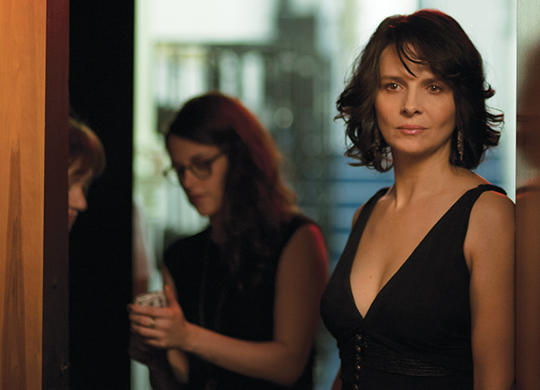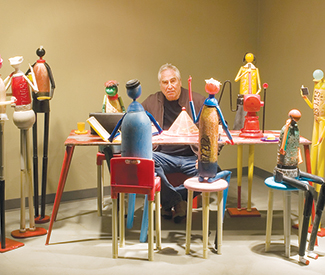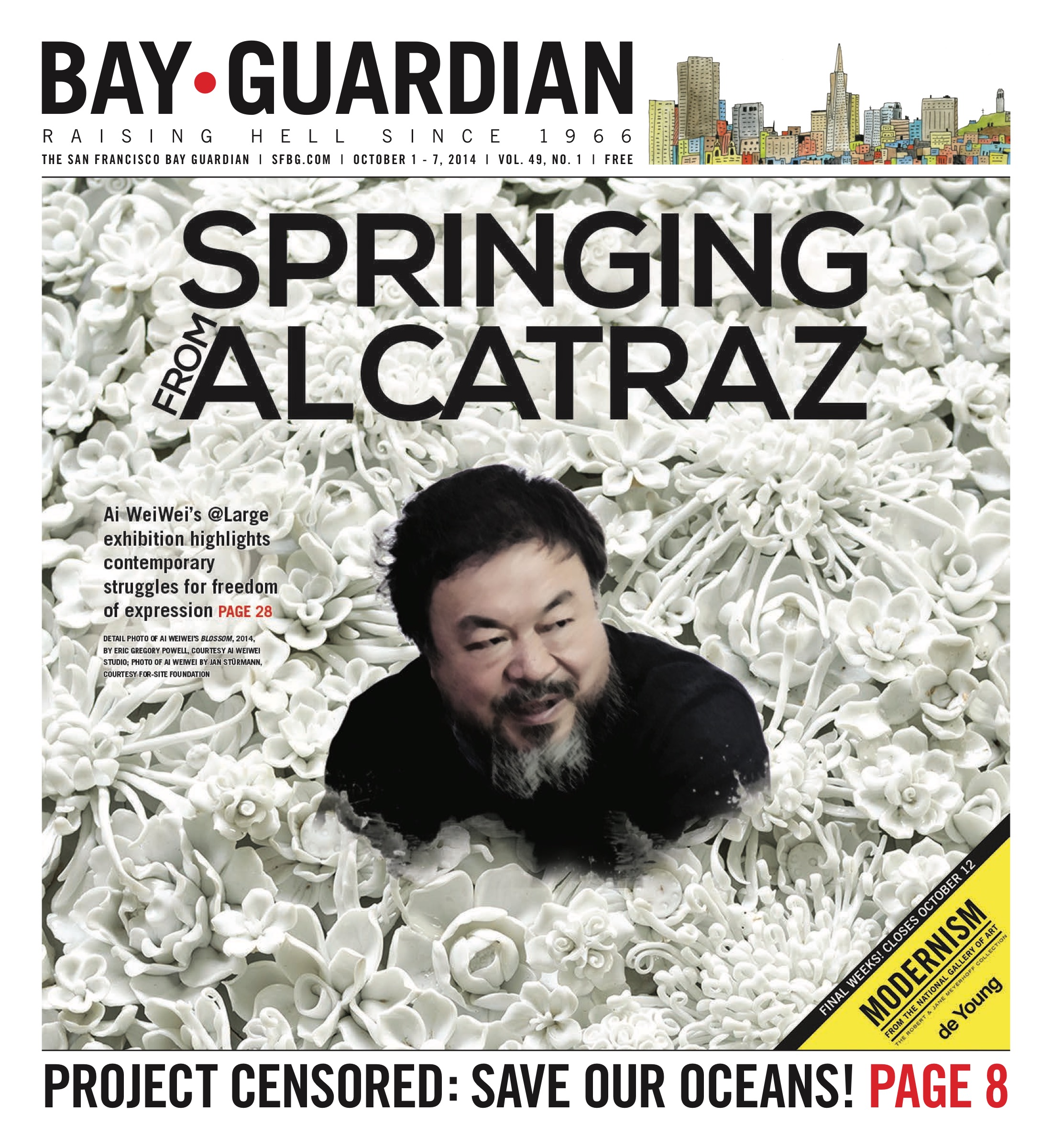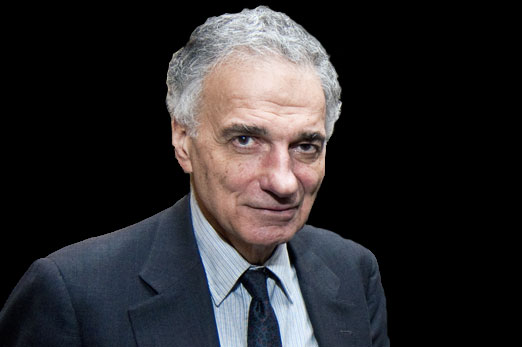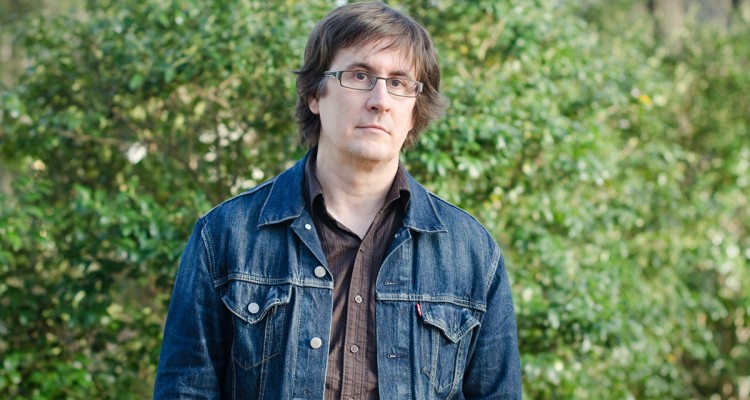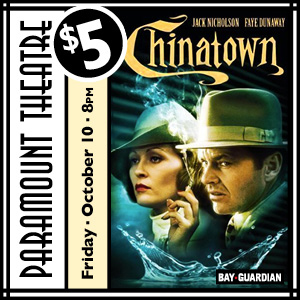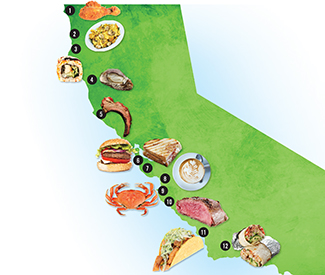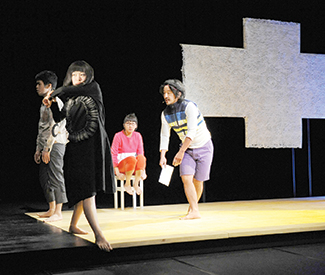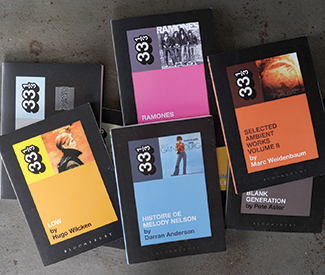THEATER
OPENING
Absolutely Fabulous Stage Werx, 446 Valencia, SF; www.eventbrite.com/e/absolutely-fabulous-abfab-tickets-12641718721. $15-35. Opens Thu/2, 8pm. Runs Thu, 8pm; Fri, 11pm. Through Dec 12. The hit British sitcom takes the stage thanks to the Royal British Comedy Theatre — despite its name, an SF company with a cast that includes Terrence McLaughlin, ZsaZsa Lufthansa, Annie Larson, Dene Larson, and Raya Light.
Adventures of a Black Girl: Traveling While Black Brava Theater Center, 2781 24th St, SF; www.brava.org. $15. Opens Fri/3, 8pm. Runs Fri-Sat, 8pm; Sun, 3pm. Through Oct 26. Edris Cooper-Anifowoshe performs her funny, poignant exploration of the impact of African migration.
Die! Mommie, Die! New Conservatory Theatre Center, 25 Van Ness, SF; www.nctcsf.org. $25-45. Previews Fri/3-Sat/4 and Oct 10, 8pm; Sun/5, 2pm. Opens Oct 11, 8pm. Runs Wed-Sat, 8pm; Sun, 2pm. Through Nov 2. New Conservatory Theatre Center performs Charles Busch’s campy comedy.
Do I Hear a Waltz? Eureka Theatre, 215 Jackson, SF; www.42ndstmoon.org. $25-75. Previews Wed/1-Thu/2, 7pm; Fri/3, 8pm. Opens Sat/4, 8pm. Runs Wed-Thu, 7pm; Fri, 8pm; Sat, 6pm; Sun, 3pm (also Oct 11, 1pm). Through Oct 19. 42nd Street Moon opens its 22nd season with this 1960s-set tell of a lonely American tourist (Tony nominee Emily Skinner) vacationing in Venice.
Yeast Nation (the triumph of life) Victoria Theatre, 2961 16th St, SF; www.rayoflighttheatre.com. $25-36. Previews Thu/2, 8pm. Opens Fri/3, 8pm. Runs Wed-Sat, 8pm (Sat/4, show at 7pm; additional shows Oct 25 and Nov 1, 2pm). Through Nov 1. Ray of Light Theatre performs the West Coast premiere of the new rock musical by Greg Kotis and Mark Hollmann (Urinetown).
BAY AREA
The Great Tragedies: Mike Daisey Takes on Shakespeare Bruns Amphitheater, 100 California Shakespeare Theater Way, Orinda; www.calshakes.org. $40-45. Opens Thu/2, 7:30pm. Runs Thu, 7:30pm; Fri-Sat, 8pm; Sun, 7pm. Through Oct 12. The storyteller puts his unique spin on Romeo and Juliet, Hamlet, Macbeth, and King Lear.
The Whale Marin Theatre Company, 397 Miller, Mill Valley; www.marintheatre.org. $35-58. Previews Thu/2-Sat/4, 8pm; Sun/5, 7pm. Opens Tue/7, 8pm. Runs Tue and Thu-Sat, 8pm; Wed, 7:30pm; Sun, 7pm. Through Oct 26. Marin Theatre Company performs Samuel D. Hunter’s drama about a 600-pound man who reconnects with his troubled teenage daughter.
ONGOING
The Barbary Coast Revue Sub/Mission Gallery, 2183 Mission, SF; www.barbarycoastrevue.com. $20. Sat, 8pm. Through Nov 29. Join Mark Twain on an interactive musical tour of Gold Rush-era San Francisco.
Cock New Conservatory Theatre Center, 25 Van Ness, SF; www.nctcsf.org. $25-45. Wed-Sat, 8pm; Sun, 2pm. Through Oct 12. English playwright Mike Bartlett’s 2010 Olivier Award-winning drama is a sly form of theatrical bait-and-switch, a play less about gay relationships, sex, or cocks per se (though it does unfold inside a cock-fighting pit) than about the web of power and need in which we can find ourselves ultimately defined — and thus owned — by others. The central character is John (a gradually sympathetic if energetically high-pitched Stephen McFarland), the only character whose name we actually learn, though that (and the generic name itself) amounts to ironic underscoring of his lack of personhood. He’s just left his longtime live-in boyfriend (Todd Pivetti) and begun a romance, for the first time in his life, with a woman (Radhika Raq). But the relative freedom and respect, as well as sexual adventure, he finds in this new relationship competes with the pull of his old ties and he soon waffles in a muddled identity crisis he finds it difficult to articulate — so others do it for him, in a battle of wills that includes John’s boyfriend’s recently widowed father (a sure and subtle Matt Weimer), full of paternal fight and truly crushed by the threatened demise of a relationship he’s long since accepted and now counts on. Director Stephen Rupsch’s production for New Conservatory Theatre Center suffers from uneven performances and takes some time getting started, but the play’s straightforward ideas crystallize nice and chillingly by the end. (Avila)
Each and Every Thing Marsh San Francisco Main Stage, 1062 Valencia, SF; www.themarsh.org. $20-50. Thu/2-Fri/3, 8pm; Sat/4, 5pm. The latest solo show from celebrated writer-performer Dan Hoyle (Tings Dey Happen, The Real Americans) winds a more random course than usual across the country and abroad but then that’s the idea — or at least Hoyle warns us, right after an opening encounter with a touchy young white supremacist, that the trip he’s taking us on is a subtle one. Displaying again his exceptional gifts as a writer and protean performer, Hoyle deftly embodies a set of real-life encounters as a means of exploring the primacy and predicament of face-to-face communication in the age of Facebook. With the help of director Charlie Varon (who co-developed the piece with Hoyle and Maureen Towey), this comes across in an entertaining and swift-flowing 75-minute act that includes a witty rap about “phone zombies” and a Dylan-esque screed at a digital detox center. But the purported subject of connection, or lack there of, in our gadget-bound and atomized society is neither very original nor very deeply explored — nor is it necessarily very provocative in a theater, before an audience already primed for the live encounter. Far more interesting and central here is Hoyle’s relationship with his old college buddy Pratim, an Indian American in post-9/11 America whose words are filled with laid-back wisdom and wry humor. Also intriguing is the passing glimpse of early family life in the Hoyle household with Dan’s celebrated artist father, and working-class socialist, Geoff Hoyle. These relationships, rather than the sketches of strangers (albeit very graceful ones), seem the worthier subjects to mine for truth and meaning. Indeed, there’s a line spoken by Pratim that could sum up the essence of Hoyle’s particular art: “It’s so much better,” he says, “when you find yourself in other people than when you just find yourself.” Hoyle’s real frontier could end up being much more personal terrain, much closer to home. (Avila)
Foodies! The Musical Shelton Theater, 533 Sutter, SF; www.foodiesthemusical.com. $32-34. Fri-Sat, 8pm. Open-ended. AWAT Productions presents Morris Bobrow’s musical comedy revue all about food.
Ideation San Francisco Playhouse, 450 Post, SF; www.sfplayhouse.org. $20-120. Tue-Thu, 7pm; Fri-Sat, 8pm (also Sat, 3pm); Sun, 2pm. Through Nov 8. SF Playhouse performs the world premiere of Aaron Loeb’s darkly comic suspense thriller.
The Late Wedding Thick House, 1695 18th St, SF; www.crowdedfire.org. $15-35. Wed-Sat, 8pm. Through Oct 11. Crowded Fire Theater performs a world premiere commission by Christopher Chen, a “journey of the soul” inspired by the work of Italian fabulist novelist Italo Calvino.
Noises Off! Shelton Theater, 533 Sutter, SF; www.sheltontheater.org. $38. Thu-Sat, 8pm. Through Oct 25. Shelton Theater performs Michael Frayn’s outrageous backstage comedy.
Old Hats ACT’s Geary Theater, 415 Geary, SF; www.act-sf.org. $20-120. Wed-Sat, 8pm (also Sat, 2pm); Sun, 2pm. Extended through Oct 12. This is a show I could watch every night: death- and age-defying master clowns Bill Irwin and David Shiner in an evening of updated and re-envisioned vaudeville-style shtick, supported by the bright and irresistible charm of singer-songwriter Shaina Taub and her versatile band (Jacob Colin Cohen, Mike Brun, Mike Dobson, and Justin J. Smith). Steppenwolf Theatre’s Tina Landau directs this buoyant Signature Theatre production, which returns Irwin and Shiner to the Geary after ACT’s 2001 production of Fool Moon. It’s can’t be easy to instill so traditional a formula with this many surprises and genuine laughs, but Irwin, Shiner, and company sure make it look that way. (Avila)
Pippin Golden Gate Theatre, 1 Taylor, SF; www.shnsf.com. $45-210. Tue-Sat, 8pm (also Wed and Sat, 2pm); Sun, 2pm. Through Oct 19. This new production of Roger O. Hirson and Stephen Schartz’s 1972 musical won the 2013 Tony for Best Revival of a Musical.
Ransom, Texas Tides Theatre, 533 Sutter, SF; www.tidestheatre.org. $10-30. Opens Thu/2, 8pm. Runs Thu-Sat, 8pm. Through Oct 18. Virago Theatre Company performs William Bivins’ Texas-set tale of escalating tension between a father and son.
Semi-Famous: Hollywood Hell Tales from the Middle New venue: Marsh San Francisco, 1062 Valencia, SF; www.themarsh.org. $20-100. Sat, 8:30pm; Sun, 7pm. Through Oct 19. Don Reed’s latest solo show shares tales from his career in entertainment.
Slaughterhouse Five Gough Street Playhouse, 1620 Gough, SF; www.custommade.org. $20-50. Thu-Sat, 8pm; Sun, 7pm (also Sun, 3pm). Extended through Oct 26. Eric Simonson’s adaptation of Kurt Vonnegut’s 1969 classic, performed by Custom Made Theatre Co., could prove a bit of a nonlinear whirlwind for any theatergoers who haven’t read the book. Like Billy Pilgrim (in “a constant state of stage fright … because he never knows what part of his life he is going to have to act in next”), the audience plummets to the futuristic planet of Tralfamadore, flashes back to the gruesome Dresden bombings, even further back to Billy as a fragile and temperamental little boy, and then forward to Billy in a mental hospital. Each of the show’s 11 actors takes on a variety of roles, and scenes last just a few minutes, with abrupt transitions marked by a loud, futuristic thrumming signal that demands attention even during breaks in the action. Minimalist set design and mimed “props” urge audience members to fill in the gaps and use their imaginations, with further enhancements offered by three large panels displaying animated versions of Vonnegut’s line drawings. Among the actors, the supporting cast is particularly effective, including the multifaceted Sal Mattos (as a ferocious German soldier, an American prisoner of war, and a mental patient), and Stephanie Ann Foster, as both Pilgrim’s emotionally eager wife and a compassionate, fatherly prisoner. Sam Tillis also has a nice (if sociopathic) turn as a vengeful war prisoner who promises to murder everyone who has crossed him. (Haley Brucato)
Too Much Light Makes the Baby Go Blind Boxcar Theatre, 505 Natoma, SF; www.sfneofuturists.com. $11-16. Fri-Sat, 9pm. Ongoing. The Neo-Futurists perform Greg Allen’s spontaneous, ever-changing show that crams 30 plays into 60 minutes.
BAY AREA
An Audience with Meow Meow Berkeley Repertory Theatre, Roda Theatre, 2015 Addison, Berk; www.berkeleyrep.org. $29-89. Tue and Thu-Sat, 8pm (also Sat and Oct 16, 2pm); Wed and Sun, 7pm (also Sun, 2pm). Through Oct 19. This self-styled “musical play” by a winking “post-post-modern” diva (the vocally and comically talented Australian chanteuse Meow Meow) is in fact much thinner than either category suggests — more like a tired music hall variety act. Written by Meow Meow and adapted and directed by Kneehigh’s Emma Rice, the routines are premised on the imperiousness and insecurities of a soi-disant megastar whose band and stage crew gradually abandon her, leaving her alone with her adoring audience. While there are one or two musical moments worth perking up a little for — in particular a vocally potent version of “Ne Me Quitte Pas,” and a mood-shifting rendition of Hans Eisler and Bertolt Brecht’s “The German Miserere” that feels incongruous here, like part of another and better show — the going is otherwise tough, the narrative forced and clunky in the extreme. Rice’s staging not only lacks inspiration but comes with a dismal abundance of low-hanging call-out-the-audience participation laughs. Barry Humphries’ Dame Edna (presumably an inspiration here) could get away with this get-the-guests approach, being a weightier and far wittier character. But here it comes across as a desperate attempt to sell a poorly written sketch supporting some unevenly appealing musical numbers. (Avila)
Fire Work Live Oak Theatre, Live Oak Park, 1301 Shattuck, Berk; www.theatrefirst.com. $10-30. Fri-Sat, 8pm; Sun, 5pm. Through Oct 19. TheatreFirst presents the world premiere of Lauren Gunderson’s romantic comedy.
House and Garden Pear Avenue Theatre, 1220 Pear, Mtn View; www.thepear.org. $10-35. Thu/2-Sat/4, 8pm (also Sat/4, 2pm); Sun/5, 2pm. Pear Avenue Theatre performs Alan Ayckbourn’s two interlocking but separate comedies, a unique theatrical experience in which the audience stays put and the actors travel between adjacent theaters, performing each play at the same time.
Life Could Be a Dream Center REPertory Company, Lesher Center for the Arts, 1601 Civic, Walnut Creek; www.centerrep.org. $37-66. Wed/1, 7:30pm; Thu/2-Sat/4, 8pm; Sun/5, 2:30pm. CenterREPertory Company performs Roger Bean’s doo-wop musical.
Lovebirds Marsh Berkeley, 2120 Allston, Berk; www.themarsh.org. $20-100. Fri, 8pm; Sat, 8:30pm. Through Oct 18. Marga Gomez brings her solo show to Berkeley after runs in SF and NYC.
The New Electric Ballroom Ashby Stage, 1901 Ashby, Berk; www.shotgunplayers.org. $20-30. Wed/1-Thu/2, 7pm; Fri/3-Sat/4, 8pm; Sun/5, 2pm. Shotgun Players perform Enda Walsh’s poetic nightmare about three sisters who are obsessed with their memories.
Year of the Rooster La Val’s Subterranean, 1834 Euclid, Berk; http://impacttheatre.com. $10-25. Thu-Sat, 8pm; Sun, 7pm. Through Oct 12. Impact Theatre performs Eric Dufault’s comedy, told from the point of view of a rooster that enters cockfights.
PERFORMANCE/DANCE
BATS Improv Bayfront Theater, B350 Fort Mason, SF; www.improv.org. $20. This week: “Improvised Twilight Zone,” Fri/3, 8pm.
“Cabaret Showcase Showdown” Martuni’s, 4 Valencia, SF; (415) 241-0205. Sun/5, 7pm. $7. The fifth season of this cabaret contest series continues with the search for “Best Showtunes Singer.”
Caroline Lugo and Carolé Acuña’s Ballet Flamenco Peña Pachamama, 1630 Powell, SF; www.carolinalugo.com. Sat/4, Oct 11, 16, 26, 6:30pm. $15-19. Flamenco performance by the mother-daughter dance company, featuring live musicians.
detour dance CounterPULSE, 3130 Mission, SF; www.detourdance.com. Fri/3-Sat/4, 8pm; Sun/5, 7pm. $20. The company celebrates its fifth anniversary with its first evening-length dance piece, Filaments; a new dance film, Rawhide; and new duet The Map.
Doc’s Lab 124 Columbus, SF; www.docslabsf.com. This week: Comedy with Tony Camin, John Hoogasian, and Red Scott, Wed/1, 8pm, $10-12; “Learn From Me: Comedy Showcase,” Thu/2, 8pm, $8-10; Mr. Lucky, Fri/3, 8pm, $8-10; Bunny Pistol’s Barbary Coast Burlesque, Sat/4, 9pm, $15-90; “Doc’s Comedy Open Mic,” Tue/7, 7pm, free.
Feinstein’s at the Nikko 222 Mason, SF; www.feinsteinssf.com. This week: Casey Breves in “Back in Town,” Wed/1, 7pm, $15; Lavay Smith and Her Red-Hot Skillet Lickers, Thu/2, 8pm, $25-40; Varla Jean Merman, Fri/3, 8pm and Sat/4-Sun/5, 7pm, $35-50.
“Hell in the Armory” Armory, 1800 Mission, SF; www.hellinthearmory.com. Tue-Sat, 7pm-midnight. Through Nov 1. $45. Kink.com celebrates Halloween with this decidedly adult, immersive, BDSM-themed haunted-house tour.
“I Am the Gentry” Exit Theatre Café, 156 Eddy, SF; www.brownpapertickets.com. Fri/3-Sat/4, 8pm. $10-20. Cara Gabriel performs her solo show about her experiences living in a rapidly-gentrifying Washington, DC neighborhood.
Lenora Lee Dance Dance Mission, 3316 24th St, SF; www.lenoraleedance.com. Fri/3-Sat/4, 8pm; Sun/5, 3pm. $15-50. Lenora Lee Dance presents its seventh anniversary season, featuring multimedia performances that tap into dance, martial arts, video projection, text, and music to tell stories of Chinese migrants in the United States.
LV Dance Collective Garage, 715 Bryant, SF; http://715bryant.info/the_garage. Fri/3, 8pm. $15. The contemporary fusion company presents “CODE: Encore Performance,” which includes two world premieres.
“Magic at the Rex” Hotel Rex, 562 Sutter, SF; www.magicattherex.com. Sat, 8pm. Ongoing. $25. Magic and mystery with Adam Sachs and mentalist Sebastian Boswell III.
“The News: Fresh Queer Performance” SOMArts Cultural Center, 934 Brannan, SF; thenewsperformance.eventbrite.com. Tue/7, 7:30pm. $5. With Annah Anti-Palidrome, Silk Worm (Eric Eich), Bernadette Herself (Eli McNally), Shaunna Vella, Kolmel WithLove, and Kat Marie Yoas.
“Out of Line Improv” Stage Werx, 446 Valencia, SF; outoflineimprov.brownpapertickets.com. Sat, 10:30pm. Ongoing. $12. A new, completely improvised show every week.
“People in Plazas” Various locations, SF; www.peopleinplazas.org. Through Fri/3. Free. Lunchtime concerts in various downtown locations showcasing jazz, world, funk, and other styles of music.
“Pilipino (Counter) Culture Night: Palagi at Magpakailanman (Always & Forever)” Bindlestiff Studio, 185 Sixth St, SF; www.brownpapertickets.com. Thu/2-Sat/4, 8pm. $10-20. Filipino folk music and dance, sketch comedy, and more, featuring the Likha Pilipino Folk Ensemble.
Portals Tavern Open Mic Comedy Portals Tavern, 179 West Portal, SF; (415) 731-1208. Mon, 9pm. Ongoing. Free. Locals perform at this comedy night hosted by Justin Alan.
“The Queenie Moon Conspiracy Show” Geary Theater, 415 Geary, SF; www.act-sf.org/joan. Sun/5, 7pm. $20-150. Performers Bill Irwin and David Shiner, Geoff Hoyle, Marga Gomez, Lorenzo Pisoni, and Diane “Pino” Wasnak take the stage to benefit local actor and clown Joan “Queenie Moon” Mankin, who was recently diagnosed with ALS and early-onset Alzheimer’s.
“Red Hots Burlesque: Burlesque in Your Neck of the Woods” Neck of the Woods, 406 Clement, SF; redhotsburlesque.com. Thu, 8-10pm. $10-20. Ongoing. Dottie Lux and company bring burlesque to the Richmond District for this weekly show.
“Rotunda Dance Series: Dimensions Dance Theater” SF City Hall, 1 Dr. Carlton B. Goodlett Pl, SF; www.dancersgroup.org. Fri/3, noon. Free. The company showcases excerpts from its 40th anniversary season, including Down the Congo Line and Yesterday-Yesternow. Youth ensemble Dimensions Extensions also performs.
San Francisco Comedy College Purple Onion at Kells, 530 Jackson, SF; www.purpleonionatkells.com. Ongoing. $5-15. “Weekly New Talent Shows,” Wed-Thu, 7pm. “Purple Onion All-Stars,” Wed-Thu, 8:15pm. “The Later Show,” Wed-Thu, 10pm. “The Cellar Dwellers” Fri-Sat, 7:30pm; Fri/3-Sat/4 headliner is Jill Weiner.
“Shit Creek” Cynic Cave, Lost Weekend Video, 1034 Valencia, SF; www.lostweekendvideo.com/cinecavecomedy. Wed/1, 8pm. $10. Comedy, storytelling, and variety acts (this month’s theme: “Spooky!”) with Jesse Fernandez, DJ Real, and Mary Van Note.
Smuin Ballet Palace of Fine Arts Theatre, 3301 Lyon, SF; www.smuinballet.org. Fri/3-Sat/4 and Oct 9-11, 8pm (also Sat/4, 2pm); Sun/5, 2pm. $24-67. The company’s “Untamed Dance Series” includes the West Coast premiere of Garrett Ammon’s Serenade for Strongs, as well as Michael Smuin’s Frankie & Johnny and Amy Seiwert’s Objects of Curiosity.
“Terminator Too: Judgment Play” and “Point Break LIVE!” DNA Lounge, 375 11th St, SF; www.dnalounge.com. Fri/3, Nov 7, and Dec 5, Terminator at 7:30pm; Break at 11pm. $20-50. The raucous, interactive staged recreations of two of 1991’s greatest action films return to the DNA Lounge.
“Wonderboy” and “29 Effeminate Gestures” Z Space, 450 Florida, SF; www.zspace.org. Thu/2-Sat/4, 8pm (also Sat/4, 3pm). $15-70. Joe Goode Performance Group and Z Space present two of Goode’s signature works, including collaboration with puppeteer Basil Twist Wonderboy, and Goode’s iconic 1987 solo Gestures (performed by company member Melecio Estrella).
BAY AREA
“Bay Area Circus Arts Festival” Alameda High School, 1301-1399 Oak, Alameda; http://bacafest.com. Fri/3, 5pm-midnight; Sat/4, 9am-midnight; Sun/5, 10am-5pm. Free. Performances, workshops, and demonstrations for circus arts enthusiasts. Also part of the fest: “Art in Motion,” a circus arts show, Sat/4, 7:30pm, at Korfman Theatre, 2200 Central, Alameda.
“A Drum Journey Through the Diaspora” Montclair Women’s Cultural Arts Center, 1650 Mountain, Oakl; www.brownpapertickets.com. Sun/5, 3:30pm. $5-20. Sistahs of the Drum performs.
“MarshJam Improv Comedy Show” Marsh Berkeley, 2120 Allston, Berk; www.themarsh.org. Fri, 8pm. Ongoing. $10. Improv comedy with local legends and drop-in guests.
“Paul C.’s Homeroom Journal” Shawl-Anderson Dance Center, 2704 Alcatraz, Berk; www.brownpapertickets.com. Sat-Sun, 8pm. Through Oct 12. $15-30. Dance Up Close/East Bay presents this dance theater collage choreographed and performed by Stranger Lover Dreamer.
“Wavy Gravy’s Hippy Icon, Flower Geezer, and Temple of Accumulated Error” Marsh Berkeley, 2120 Allston, Berk; www.themarsh.org. Sat/4, 8pm; Sun/5, 2pm. $15-50. The peace activist, entertainer, and Ben and Jerry’s flavor inspiration performs his autobiographical solo show. *

